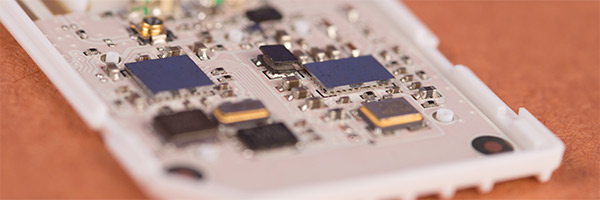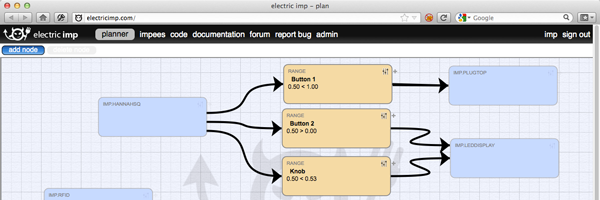
My apartment is filled with a lot of technology, both analog and digital. I have older tech: a desk, window, and doors—and more advanced kit, like electric lights, a coffee machine, and a microwave. Naturally, I also have an iPad, an iPhone, a Kindle, a MacBook and many other devices that can communicate not only with me, but with the outside world via the Internet. Despite all that, there remains a chasm between my offline gadgets and my online ones.
For over a decade now, we’ve heard about “The Internet of Things”—the idea that all of my home’s electronics can communicate with each other via the Internet. I’ll be able to control my toaster from my smartphone, or have my washing machine text me when it’s done. But there are relatively few devices out there that can actually do this.
A new Silicon Valley startup is hoping to change all that. Electric Imp is a Wi-Fi chip embedded into a SD-card sized case that is then connected via circuit board to any sort of electronics device. They currently sell “dev kits” for about $20 to $30.
The idea is to make home automation really easy—simple enough for a DIY newbie like me. Electric Imp takes its proprietary hardware and puts on a simplified programming interface, along the lines of Apple’s Automator or IFTTT.

“I want this plant to text me when it needs watering,” said Hugo Fiennes, in an interview with Ars earlier this year. “At the moment, that type of application is not done because it's too difficult.”
I was interested, so I grabbed an Electric Imp dev kit. Next, I enlisted the help of Malcolm Knapp—a friend whose electrical engineering knowledge I love tapping into. We started tossing around ideas, and thought about creating an Electric Imp-powered coffee machine—Ars readers could make me coffee over the Internet!
But as we sat at his dining table, with an upturned coffee machine's guts exposed, we started realizing there were some problems with the concept.
While sort of a neat parlor trick, it didn’t actually do anything all that useful. We’d just be allowing the coffee machine to be turned on via the Internet. It would only work, of course, if I’d already gone through the trouble of putting water and ground coffee beans in it—in other words about 90 percent of the process. Plus, someone else already beat us to it last month: meet the iPhone-powered Coffee Pot.

As we sat around and talked about it, we came up with two other possible ideas.
The first would be a way to reward us here at Ars for doing a good job. Malcolm had the idea of hacking a gumball machine that would dispense a gumball (or candy or whatever), every time one of my articles got retweeted 100 times. The second—and one that would honestly have a much more practical application—would be to have Malcolm’s washing machine send him a text message every time it was done washing.
We couldn’t agree on which of these projects to tackle, so we’re asking you to help us. Like one of our ideas? Is there some other useful and/or ridiculous Electric Imp project that Malcolm and I could take on that you’d love to read about? You know where the comments section is—help a DIYer out.
reader comments
149